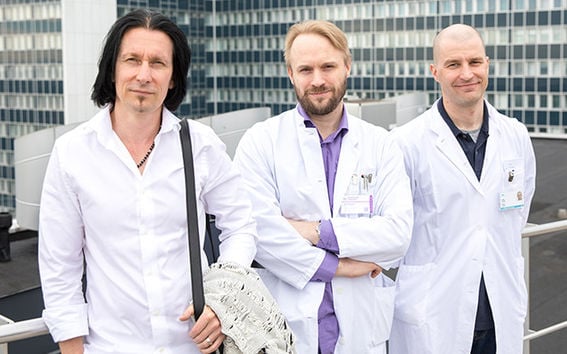Finnish innovation to reduce complications after open heart surgery

The innovation is designed to measure the condition of the cardiac muscle in real time – and to save hundreds of people every year, researchers believe.
The idea for the new measurement technology results from the Biodesign Finland project, originally a research and product development method created in Stanford University and applied around the world.
In a Biodesign project, a team of experts in medicine, biosciences, engineering, computer science, product design, law or business first take on field work in a hospital environment. They map out and take note of all kinds of issues and needs at the hospital that are unmet and need solving. Finally, the team zones in on one problem for which they start to design and commercialise a technological solution.
Many complications after open heart surgeries are brought on by lack of oxygen in the cardiac muscle during the operation. It puts stress on the muscle which may lead to malfunctions and failure. Every five patients also experience temporary malfunctions of the left ventricle after surgery, and many require constant medication or a pacemaker as treatment.
The heart has to be stopped during surgery in order to give the surgeon a motionless and bloodless area on which to operate. For the duration, the heart receives no oxygen or nutrients, and the longer the operation takes, the greater the risk of damaging the cardiac muscle runs.
The surgical team should be able to keep track of the condition of the cardiac muscle both in real during the operation and in the days immediately after the procedure. As of now, there are no viable means to do it. This is where the Biodesign Finland team and their innovation come in to play.
“The initiative came from pediatric heart surgeon Tommi Pätilä. He saw that there was room for improvement in the ways patients are monitored during operations. Individual differences between patients were being ignored while the surgical teams were forced to rely mainly on aggregate data while monitoring each patient. As a contrary approach, evidence-based medicine is a rapidly growing trend, and our innovation pushes it forward,” explains Kalle Kotilahti, Biodesign project manager and PhD in biomedical engineering from Aalto University.
”We are developing a sensor technology that would provide the surgeon measured, real-time data on the condition of the patient’s cardiac muscle,” sums up Sami Elamo, both MD in orthopedics and traumatology and M.Sc.
In surgical use, the team’s measurement technology could speed up patients’ recovery, enhance their quality of life afterwards, and downright save hundreds of lives every year.
“Globally, a million open heart surgeries are carried out every year, so obviously there is a great demand for technology that could improve the quality of operations – and a market the size of hundreds of millions of euros,” estimates Jari Rantala, M.Sc. and innovation expert in the team.
The team amassed over 200 observations and problems during their field work at the Helsinki University Hospital’s Meilahti Tower Hospital. They have all been included in the hospital’s own development system for further processing. The findings will also be put to use in cross-disciplinary project courses at Aalto University where students get to innovate new technologies and services.
”Biodesign has changed my mindset a great deal. Medical school so easily drives you down a clearly sequestered path of specified knowledge. You end up knowing a lot of your own field, but stepping outside barely crosses your mind. And this often kills creative impulses. Now I’ve been trained to see how the hospital and the health care system work from a new angle – and to see real needs and possible solutions that will actually matter,” says Sami Elamo, MD.
Biodesign Finland 2017 is the second run of the project in the country. The team will start to develop its innovation in 2018 with an 18-month funding from Business Finland and Aalto University Department of Neuroscience and Biomedical Engineering.
Further information:
Kalle Kotilahti, Innovation Fellow
Biodesign Finland 2017
tel. +358 50 3443162
[email protected]
Read more news

Get to know us: Associate Professor Maria Sammalkorpi
Sammalkorpi received her doctorate from Helsinki University of Technology 2004. After her defence, she has worked as a researcher at the Universities of Princeton, Yale and Aalto.
Aalto computer scientists in ICML 2024
Computer scientists in ICML 2024
In low-hierarchy organisations, even key policy issues are discussed in Slack
In a recent study, Aalto University alumn Lauri Pietinalho, a visiting scholar at New York University's Stern School of Business, and Frank Martela, an assistant professor at Aalto University, investigated how low-hierarchy organisations deal with shared policies in confrontational situations and how authority functions within them.